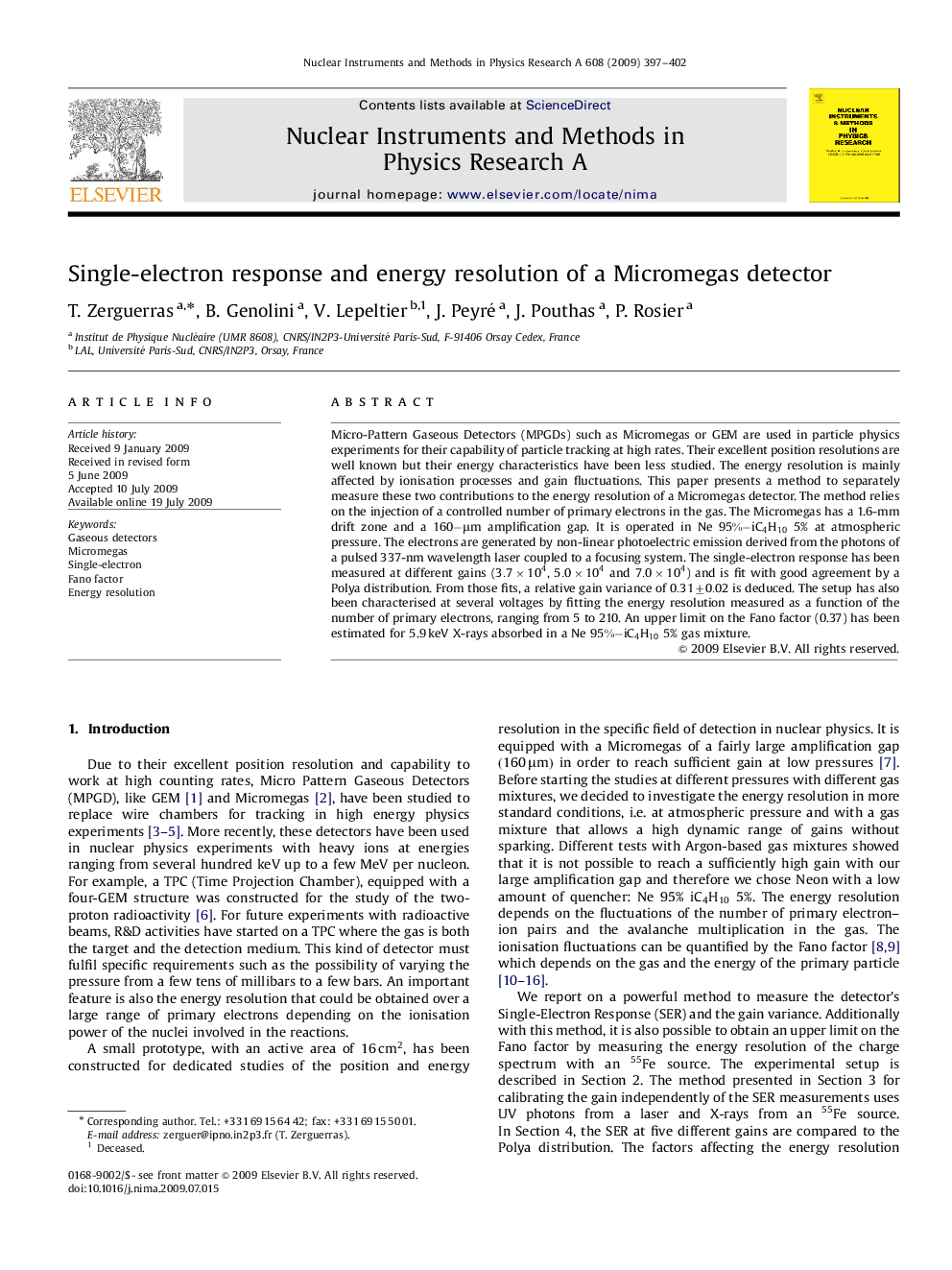| Article ID | Journal | Published Year | Pages | File Type |
|---|---|---|---|---|
| 1827661 | Nuclear Instruments and Methods in Physics Research Section A: Accelerators, Spectrometers, Detectors and Associated Equipment | 2009 | 6 Pages |
Micro-Pattern Gaseous Detectors (MPGDs) such as Micromegas or GEM are used in particle physics experiments for their capability of particle tracking at high rates. Their excellent position resolutions are well known but their energy characteristics have been less studied. The energy resolution is mainly affected by ionisation processes and gain fluctuations. This paper presents a method to separately measure these two contributions to the energy resolution of a Micromegas detector. The method relies on the injection of a controlled number of primary electrons in the gas. The Micromegas has a 1.6-mm drift zone and a 160-μm160-μm amplification gap. It is operated in Ne 95%-iC4H1095%-iC4H10 5% at atmospheric pressure. The electrons are generated by non-linear photoelectric emission derived from the photons of a pulsed 337-nm wavelength laser coupled to a focusing system. The single-electron response has been measured at different gains (3.7×1043.7×104, 5.0×1045.0×104 and 7.0×1047.0×104) and is fit with good agreement by a Polya distribution. From those fits, a relative gain variance of 0.31±0.020.31±0.02 is deduced. The setup has also been characterised at several voltages by fitting the energy resolution measured as a function of the number of primary electrons, ranging from 5 to 210. An upper limit on the Fano factor (0.37) has been estimated for 5.9 keV X-rays absorbed in a Ne 95%-iC4H1095%-iC4H10 5% gas mixture.
